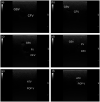Evaluating the effectiveness of a lower extremity venous phantom on developing ultrasound examination skills and confidence
- PMID: 33552224
- PMCID: PMC7844470
- DOI: 10.1177/1742271X20950777
Evaluating the effectiveness of a lower extremity venous phantom on developing ultrasound examination skills and confidence
Abstract
Introduction: The aims of this study were: (1) Determine the effect on student ultrasound scanning skills using a lower extremity venous ultrasound phantom in addition to standard teaching methods of didactic lecture and scanning live volunteers and (2) Determine the effect of using a lower extremity venous ultrasound phantom in addition to standard teaching methods of didactic lecture and scanning live volunteers on student confidence levels in performing the lower extremity venous ultrasound examination.
Methods: Participants were first year diagnostic medical sonography students with minimal scanning experience (n = 11), which were randomized into two groups. Group 1 (n = 5) received the standard didactic lecture and attended a scan lab assessment where they performed a lower extremity venous examination on a human volunteer. Group 2 (n = 6) received the standard didactic lecture, performed three scheduled scanning sessions on an anatomic lower extremity venous phantom with flow and then attended the same scan lab assessment as Group 1, where they performed a lower extremity venous examination on a human volunteer.
Results: Scan lab assessments on day 4 of the study demonstrated a significant difference in scanning performance (p = 0.019) between the two groups. Post scan lab assessment confidence scores also demonstrated a significant difference between how participants in each group scored their confidence levels (p = 0.0260), especially in the ability to image calf veins.
Conclusions: This study suggests anatomical phantoms can be used to develop scanning skills and build confidence in ultrasound imaging of the lower extremity venous structures.
Keywords: Ultrasound; lower extremity venous; phantom; scanning skills.
© The Author(s) 2020.
Conflict of interest statement
Declaration of Conflicting Interests: The author(s) declared the following potential conflicts of interest with respect to the research, authorship, and/or publication of this article: Financial competing interests: Carol Mitchell: Davies Publishing Inc., authorship textbook. Elsevier, Wolters-Kluwer, author textbook chapters, royalties. Contracted research grants from W.L. Gore & Associates to UW Madison.
Figures





References
-
- Press GM, Miller SK, Hassan IA, et al. Evaluation of a training curriculum for prehospital trauma ultrasound. J Emerg Med 2013; 45: 856–864. - PubMed
-
- Mitchell CKC. Defining the path from a technical occupation to a profession: the role of the diagnostic medical sonographer PhD Dissertation, University of Missouri-Kansas City, USA, 2002.
-
- Nitsche JF and, Brost BC. Obstetric ultrasound simulation. Semin Perinatol 2013; 37: 199–204. - PubMed
-
- Dawson DL, Meyer J, Lee ES, et al. Training with simulation improves residents’ endovascular procedure skills. J Vasc Surg 2007; 45: 149–154. - PubMed
LinkOut - more resources
Full Text Sources
Miscellaneous
